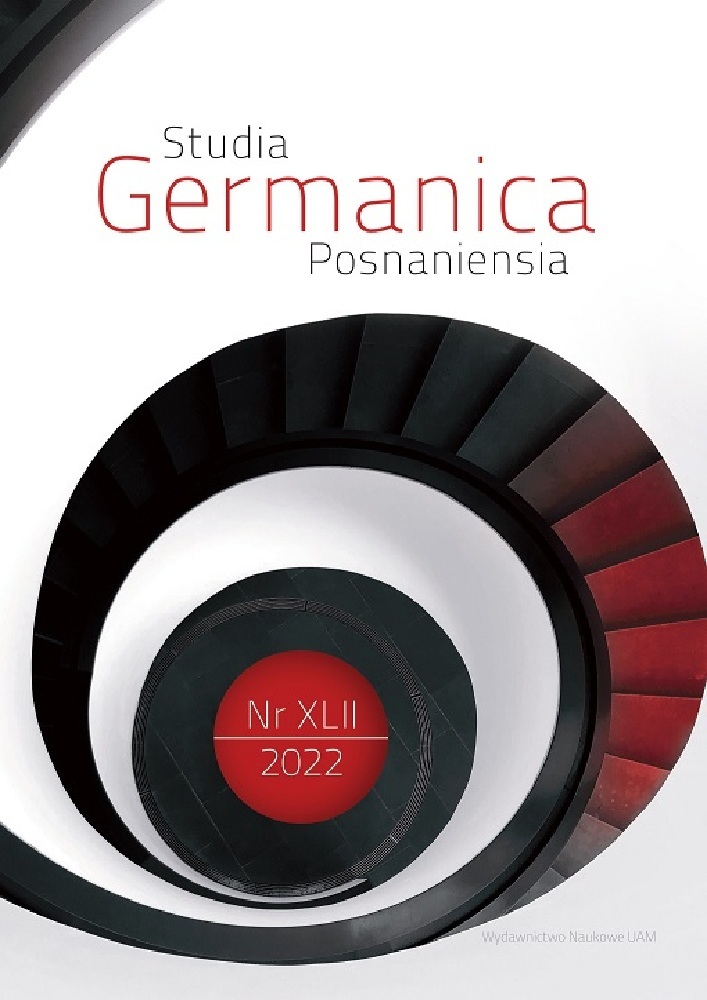Abstract
Threatened or threatening nature as the resistant, often also indifferent, sublime other of technical-civilisational progress has always been a motif in H.M. Enzensberger’s poetry, also in his earlier work, and consequently a much-discussed topic in Enzensberger scholarship of the later twentieth century, not least in the context of the growing environmental problem and the debates on nuclear energy. More recent ecocritical tendencies in cultural and literary studies have revisited this discussion, but for the most part remain wedded to a somewhat obsolete Enlightenment-critical binary logic of man & technology vs. nature or environment. – In this essay, I would like to deal with Enzensberger’s more recent (and most recent) poetry, which (like Enzensberger’s lyrical work after about 1990 as a whole, by the way) remains conspicuously underlit in more recent studies. An attempt will be made to read this lyric poetry with more recent cultural-critical and -scientific or literary discourses, which see themselves as posthumanist critique in the age of the so-called Anthropocene, and to critically examine Enzensberger’s literary appropriation of such discourses. On the foil of these posthumanist reflections, it becomes apparent how in Enzensberger’s recent and latest poetry the old binary oppositions of man and nature, nature and technology, man and animal, consciousness and corporeality or materiality etc. are deconstructed as anthropocentric schemes and other more complex and hybrid forms of life or networks and creaturely figures are brought into view, albeit in Enzensberger’s familiar ironic tone. this discussion, but for the most part remain wedded to a somewhat obsolete Enlightenment-critical binary logic of man & technology vs. nature or environment. – In this essay, I would like to deal with Enzensberger’s more recent (and most recent) poetry, which (like Enzensberger’s lyrical work after about 1990 as a whole, by the way) remains conspicuously underlit in more recent studies. An attempt will be made to read this lyric poetry with more recent cultural-critical and -scientific or literary discourses, which see themselves as posthumanist critique in the age of the so-called Anthropocene, and to critically examine Enzensberger’s literary appropriation of such discourses. On the foil of these posthumanist reflections, it becomes apparent how in Enzensberger’s recent and latest poetry the old binary oppositions of man and nature, nature and technology, man and animal, consciousness and corporeality or materiality etc. are deconstructed as anthropocentric schemes and other more complex and hybrid forms of life or networks and creaturely figures are brought into view, albeit in Enzensberger’s familiar ironic tone.
References
Agamben, G. (1998). Homo Sacer: Sovereign Power and Bare Life. Stanford, California: Stanford University Press (Originalwerk veröffentlicht 1995).
Agamben, G. (2004). The Open. Man and Animal. Stanford, California: Stanford University Press (Originalwerk veröffentlicht 2002).
Braidotti, R. (2014). Posthumanismus. Jenseits des Menschen. Frankfurt a. M.: Campus (Originalwerk veröffentlicht 2013).
Deleuze, G. & Guattari, F. (1992): Tausend Plateaus. Kapitalismus und Schizophrenie (II). Berlin: Merve (Originalwerk veröffentlicht 1980).
Enzensberger, H.M. (1960, Neuauflage 1999). Landessprache. Frankfurt a. M.: Suhrkamp (abgekürzt als LS).
Enzensberger, H.M. (1960, Neuauflage 1999). Blindenschrift. Frankfurt a. M.: Suhrkamp (abgekürzt als BS).
Enzensberger, H.M. (1975). Mausoleum. Siebenunddreißig Balladen aus der Geschichte des Fortschritts. Frankfurt a. M.: Suhrkamp.
Enzensberger, H.M. (1991). Zukunftsmusik. Frankfurt a. M.: Suhrkamp (abgekürzt als ZM).
Enzensberger, H.M. (1995). Kiosk. Neue Gedichte. Frankfurt a. M.: Suhrkamp (abgekürzt als K).
Enzensberger, H.M. (1999). Leichter als Luft. Moralische Gedichte. Frankfurt a. M.: Suhrkamp (abgekürzt als LL).
Enzensberger, H.M. (2003). Geschichte der Wolken. 99 Meditationen. Frankfurt a. M.: Suhrkamp (abgekürzt als GW).
Enzensberger, H.M. (2004). Natürliche Gedichte. Berlin: Insel Verlag.
Enzensberger, H.M. (2007). Zu große Fragen: Interviews und Gespräche 2005-1970. Herausgegeben von R. Barbey. Mit einem Nachwort von Hans Magnus Enzensberger. Frankfurt a. M.: Edition Suhrkamp.
Enzensberger, H.M. (2009). Rebus. Gedichte. Frankfurt a. M.: Suhrkamp (abgekürzt als R).
Enzensberger, H.M. (2013). Blauwärts. Berlin: Suhrkamp Verlag (abgekürzt als BW).
Enzensberger, H.M. (2020). Gedichte 1950-2020. Berlin: Suhrkamp.
Enzensberger, H.M. (2020). Wirrwarr. Berlin: Suhrkamp (abgekürzt als WW).
Foucault, M. (2008). Die Ordnung der Dinge. Eine Archäologie der Humanwissenschaften. In M. Foucault, Die Hauptwerke. Frankfurt a. M.: Suhrkamp (Originalwerk veröffentlicht 1966).
Herbrechter, S. (2013). Posthumanism. A Critical Analysis. London, New Delhi, New York, Sydney: Bloomsbury.
Holthusen, H.E. (1980). Chorführer der neuen Aufklärung. Über den Lyriker Hans Magnus Enzensberger. Merkur, 34, 896-912.
Ludwigs, M. (2020). Ach! Amerika. Hans Magnus Enzensberger anders betrachtet. Darmstadt: wbgAcademic.
Marder, M. (2013). Plant Thinking. A Philosophy of Vegetal Life. Columbia University Press.
Melin, Ch.A. (2003). Poetic Maneuvers. Hans Magnus Enzensberger and the Lyric Genre. Evanston: Northwestern University Press.
Whitehead, A.N. (1920). The Concept of Nature. Cambridge: Cambridge University Press.
Wolfe, C. (2010). What is Posthumanism? Minneapolis, London: University of Minnesota Press.
License
Copyright (c) 2022 Bart Philipsen

This work is licensed under a Creative Commons Attribution-NoDerivatives 4.0 International License.
